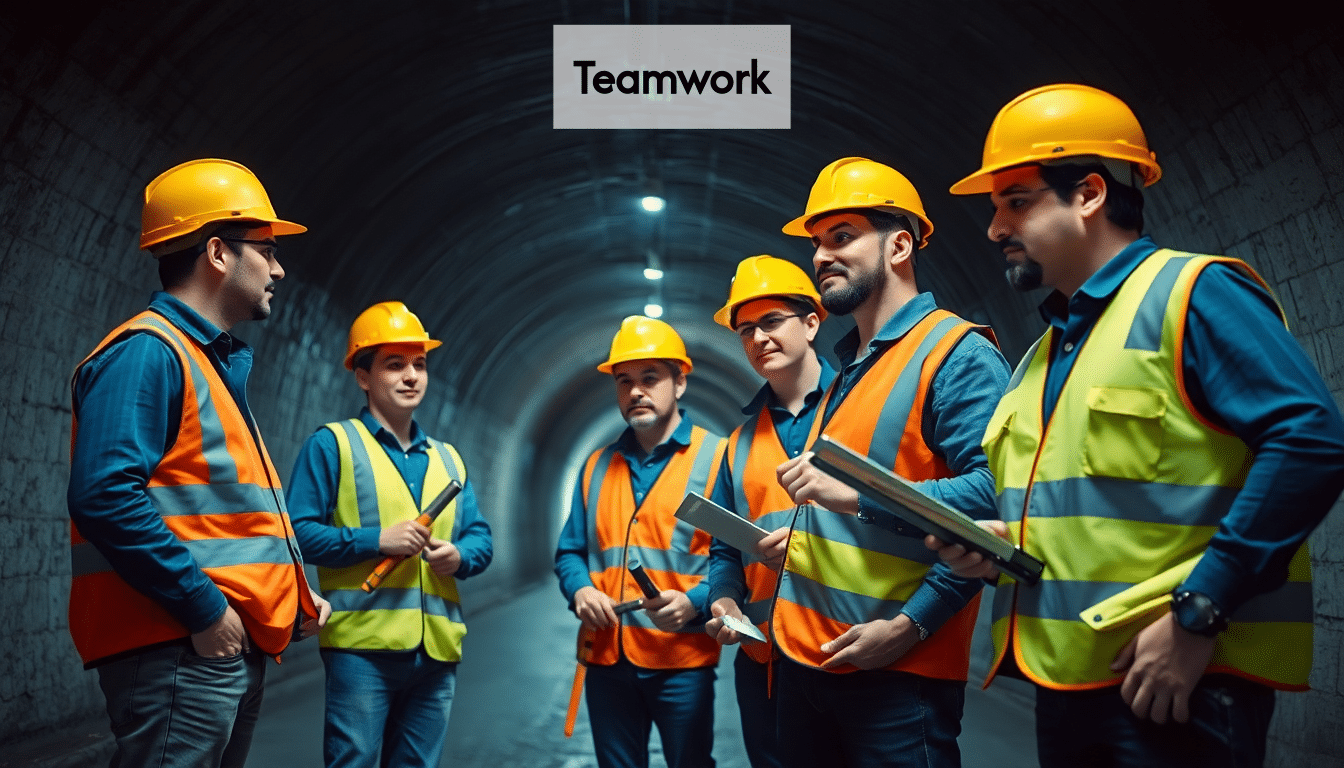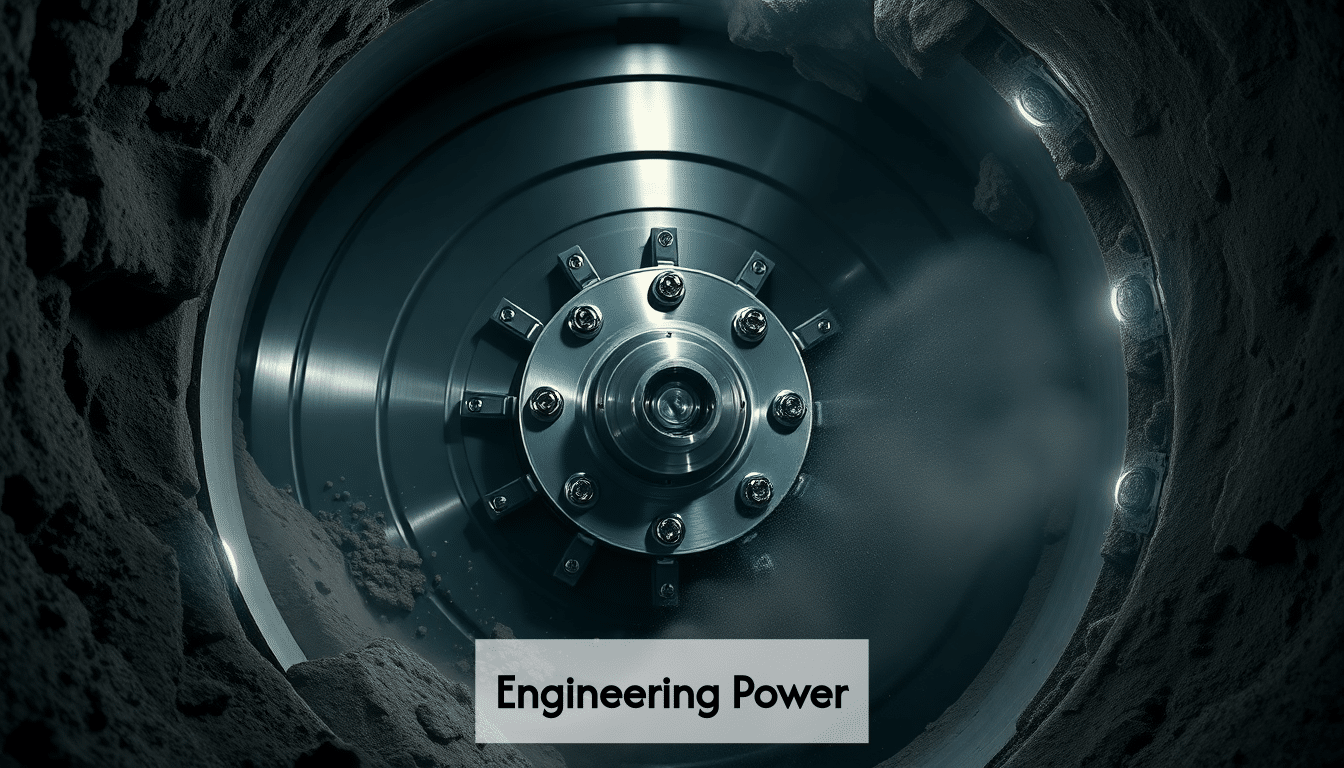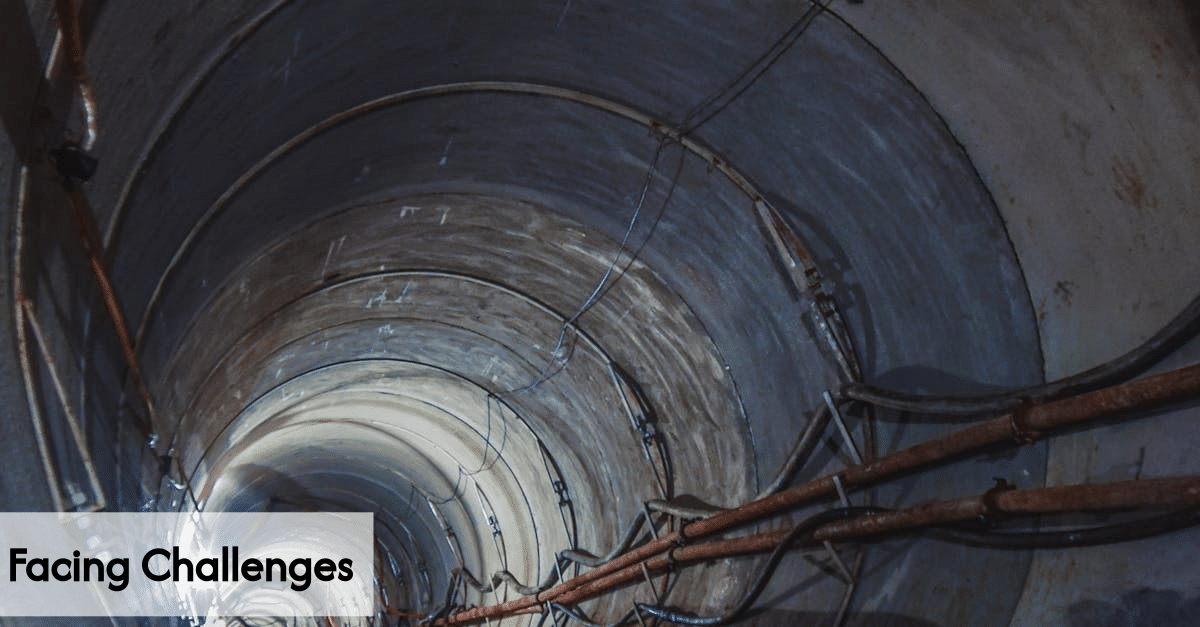Introduction to Tunnel Build
When you hear the term “tunnel build,” you might picture massive machinery, hard hats, and the distant sound of drills echoing through dark passages. But the art of tunnel building is far more intricate and fascinating than that! As I dived deeper into the world of constructing a tunnel, I realized it’s not just about digging a hole and calling it a day; it’s a complex dance of engineering, geology, and creativity.
So, what exactly is a tunnel build? Well, at its core, it’s the process of constructing a subterranean passage designed for both infrastructure and transportation. I mean, think about it! From the majestic underground train systems in cities like New York and London to the cleverly designed stormwater tunnels that keep our cities dry, tunnels play an essential role in modern civilization and underground tunnel building is an art in its own right.

Why Build Tunnels?
Tunnels provide a myriad of benefits—they save us surface space, reduce traffic congestion, and can even protect our environments by reducing the land used for transportation. And for those like me, who love a good challenge, building tunnels offers an adrenaline rush that’s hard to match! The process involves a plethora of techniques and considerations, whether you’re embarking on a personal DIY project or working on a multi-million dollar infrastructure project.
In this ultimate guide, we’ll be breaking down everything you need to know about tunnel building: from the essential techniques and methodologies to important safety measures that ensure every underground venture is a success. Join me as we navigate the fascinating world of how to build an underground tunnel and explore the processes that go on beneath our feet!
The Importance of Tunnel Building in Modern Infrastructure

When it comes to modern infrastructure, tunnel building isn’t just a trend—it’s a necessity! Imagine a bustling city without the labyrinth of tunnels that transport everything from people to wastewater below the surface. As I explored this topic, it became clear that tunnels are the unsung heroes of urban development, painstakingly constructed to support daily life above ground.
Enhanced Transportation
Tunnels are pivotal for enhancing transportation systems in urban areas. Whether it’s the metro network in Paris or the extensive subway system in Tokyo, tunnels allow for efficient movement without cluttering city streets. They help build an underground tunnel framework that accommodates the growing number of commuters. Did you know that the Gotthard Base Tunnel in Switzerland is the longest railway and deepest traffic tunnel in the world? This colossal feat of engineering reduces travel time and boosts economic activity. Just makes you want to grab a shovel and start making tunnels yourself, right?

Environmental Conservation
Tunnel building also plays a crucial role in protecting our environment. By directing stormwater through underground channels, we minimize surface flooding and erosion. This method, often implemented in stormwater management systems, allows us to build a tunnel that harmonizes with nature rather than fight against it. It’s fascinating how understanding how to make an underground tunnel can contribute to ecological preservation!
Safety and Security
With increasing concerns about urban safety, building tunnels can also provide secure pathways for utilities and communication lines. This helps to facilitate quick repairs during emergencies without disrupting the daily lives of residents. Overall, when we talk about building an underground tunnel system, we’re looking at a tremendous investment in infrastructure that pays dividends for years to come.
In summary, as we navigate the ins and outs of tunnel build techniques, it’s essential to remember the significant role these underground structures play in enhancing transportation, conserving the environment, and ensuring urban safety. Let’s dig deeper into the methods used for constructing a tunnel!

Techniques and Methods for Constructing a Tunnel
When embarking on the incredible journey of tunnel building, a variety of techniques and methods come into play, each chosen based on the project type and geological conditions. As I delved deeper into the art of constructing a tunnel, I could appreciate the meticulous planning and innovative engineering that make these subterranean passages a reality.
1. Cut-and-Cover Method
This is one of the simplest techniques for building tunnels and is often used for shallow tunnels. Imagine digging a trench, constructing the tunnel walls and roof, and then covering it up again—easy peasy, right? The cut-and-cover method is a favorite for urban constructions, like subway systems, because it minimizes disruption to surface activities. However, it can be labor-intensive and may require significant temporary detours for traffic above.
2. Boring Machines
Now, let’s talk about the technological marvels known as Tunnel Boring Machines (TBMs). These machines are akin to giant, cylindrical drills that chew through the earth smoothly and seamlessly. What fascinates me is how TBMs can create perfectly round tunnels, which is especially essential when constructing a tunnel for high-speed trains. The largest TBM to date, “Big Bertha,” used for the Alaskan Way Viaduct project in Seattle, was nearly 58 feet in diameter! Just imagine that!
3. NATM (New Austrian Tunneling Method)
If you’re looking for a technique that combines traditional engineering with modern practices, look no further than the New Austrian Tunneling Method. This method emphasizes ground monitoring and uses the natural support of surrounding rock to stabilize tunnels. As adjustments are made based on ongoing assessments, it allows for flexibility during construction. I love how it embodies the spirit of innovation while still respecting the geological environment!
4. Immersed Tunnel Method
While this might sound like magic, the immersed tunnel method involves prefabricated tunnel sections that are placed in a shallow underwater trench. Once the sections are submerged, they’re sealed and covered with material to ensure they stay in place. This approach is typically employed in waterways or coastal areas and is a spectacular feat of engineering!
Real-world Applications
In practice, these techniques can often work in tandem. For instance, the London Crossrail project utilized a mix of TBMs for deep tunnels and the cut-and-cover method for stations, demonstrating how versatile and adaptable tunnel building can be.
As we gear up to explore the considerations in tunnel building, it’s clear that choosing the right construction technique can be just as crucial as the end goal itself. Each method brings unique benefits and challenges, ultimately shaping the landscape below our cities.
Safety Measures and Considerations in Building Tunnels Underground
When diving into the depths of tunnel building, safety should always be at the forefront of our minds. As exhilarating as constructing a tunnel can be, it also comes with its fair share of risks. After all, we’re dealing with heavy machinery, unpredictable geological conditions, and confined spaces—definitely not the place for carelessness! Over the course of my research, I’ve uncovered some essential safety measures and considerations that should be part of every tunnel build.
1. Geotechnical Studies
Before any digging begins, performing thorough geotechnical studies is non-negotiable. Understanding the type of soil, rock formations, and underground water tables can make or break a construction project. These preliminary steps can help predict potential issues like landslides or flooding, so you’re not caught off-guard when you’re down there trying to make a tunnel. As one tunneling expert stated, “A well-informed foundation sets the stage for a safe and successful tunnel venture.”
2. Ventilation Systems
Believe it or not, ventilation is crucial when building tunnels underground! The deeper you dig, the more you need to ensure proper airflow to combat potential toxic gas accumulation and maintain fresh air. I learned that effective ventilation systems not only keep workers safe but also help with maintaining appropriate temperature levels during construction. Honestly, nobody wants to be in a sweaty, stuffy tunnel—yikes!
3. Emergency Preparedness
Planning for emergencies is essential when constructing a tunnel. Site-specific emergency response plans should be developed, considering potential scenarios such as cave-ins, fires, or equipment failures. Workers should undergo regular training, and escape routes must always be clearly marked and accessible. As we all know, it’s better to be safe than sorry, and having these measures in place can save lives.
4. Regular Inspections
Conducting regular inspections throughout the building process is vital for considering safety. Monitoring structural health using technology like strain gauges and instrumentation systems helps detect any issues early. Think of it as a safety check-up for your tunnel! If something doesn’t look right, adjustments can be made before it spirals into a larger problem.
5. Worker Training and Awareness
Last but definitely not least, training workers on safety protocols cannot be stressed enough! From understanding how to operate machinery safely to recognizing the importance of wearing personal protective equipment, knowledge is power. A culture prioritizing safety creates a better environment for everyone involved in the project—no one wants to work in a risky situation!
In conclusion, as we navigate through the thrill of building tunnels, we must never forget the essential safety measures that keep our projects—and people—protected. By prioritizing safety alongside the excitement of construction, we can ensure that our underground adventures remain rewarding and secure!
Step-by-Step Guide on How to Build an Underground Tunnel
Now that we’ve covered the techniques, importance, and safety measures surrounding tunnel building, let’s get to the nitty-gritty! If you’ve got the ambition and the right equipment (and, let’s be real, some serious engineering skills), you might be wondering how to build an underground tunnel of your own. Here’s a step-by-step guide that can help you navigate the process of constructing a tunnel. Just remember: this guide is for educational purposes, so always consult professionals when needed!
Step 1: Planning and Design
First things first—planning! Start by defining your goals for the tunnel. Will it be used for transportation, utilities, or maybe just a secret passage (for your own superhero lair, perhaps)? Once you’ve nailed this down, you’ll need to create detailed blueprints that consider the tunnel’s dimensions, location, and purpose. This is also the stage where you conduct the crucial geotechnical studies to evaluate the soil and surrounding environment.
Step 2: Obtain Necessary Permits
Before you start digging, check local regulations. Building a tunnel isn’t as simple as grabbing a shovel and going to town. Acquiring the necessary permits is essential, as they ensure you’re compliant with legal requirements and that safety measures are in place.
Step 3: Gather Your Tools and Materials
Next up is equipment procurement. Depending on the chosen method for your tunnel build, you’ll need excavation tools, a reliable tunnel boring machine (if you’re feeling fancy), safety gear, and materials for tunnel lining and supports. Can you imagine the thrill when you finally get to see that big machinery in action?
Step 4: Excavate the Tunnel
Now comes the fun part—excavation! Using the selected digging method (cut-and-cover, TBM, etc.), start removing earth to create the tunnel. Pay close attention to safety measures and maintain constant communication with your team. This stage is all about making sure everything goes according to plan.
Step 5: Build the Tunnel Structure
Once your tunnel is excavated, you’ll need to establish a solid structure. This can involve installing tunnel linings, reinforcements, and concrete supports to ensure stability. After all, nobody wants their meticulously constructed underground tunnel to cave in!
Step 6: Implement Ventilation and Lighting
As the tunnel starts to take shape, installing proper ventilation and lighting systems becomes essential. This ensures that everything remains well-ventilated and safe for any individuals working or traveling through the tunnel. It’s not just about digging a hole; it’s about creating a functional environment!
Step 7: Final Inspections and Testing
Once construction of the tunnel is complete, comprehensively inspect the entire system. Check for any structural issues, and ensure emergency systems are in place. You might want to simulate a small emergency to test everything out—just for practice, of course!
Step 8: Open for Use
Finally, it’s time to open your tunnel! Once you’ve met all safety regulations and passed inspections, you’re ready to unveil your creation. Whether it’s for transportation, stormwater management, or just a cool underground space, you can finally revel in the satisfaction of your hard work.
In sum, constructing an underground tunnel is a vast and complex endeavor—yet incredibly rewarding. Though it might be daunting, this step-by-step guide aims to demystify the process and get you excited about the adventure of tunnel building. Who knows? Your underground tunnel could one day become a vital part of your community!
Frequently Asked Questions
What are the main methods used for constructing a tunnel?
The main methods include the Cut-and-Cover Method, Tunnel Boring Machines (TBM), the New Austrian Tunneling Method (NATM), and the Immersed Tunnel Method. Each technique is selected based on geological conditions and project requirements.
Why are tunnels important in urban infrastructure?
Tunnels enhance transportation by providing efficient pathways for commuters and utilities, conserve the environment by managing stormwater and preventing flooding, and ensure safety and security for essential services and emergency repairs.
What safety measures should be considered during tunnel construction?
Essential safety measures include conducting geotechnical studies, ensuring proper ventilation, preparing for emergencies with response plans, conducting regular inspections, and training workers on safety protocols.
How do I start building an underground tunnel?
Begin with thorough planning and design, obtain necessary permits, gather tools and materials, excavate the tunnel, build the structure, implement ventilation and lighting, conduct final inspections, and then you can open the tunnel for use.
Unlock Your Potential in Tunnel Construction with Amundson Group!
As you’ve discovered in “The Ultimate Guide to Tunnel Build: Techniques, Considerations, and Safety Measures,” the journey of tunnel construction is not without its challenges. From selecting the right methodologies—like Tunnel Boring Machines (TBMs)—to ensuring the vital safety measures are in place, every aspect demands top-tier talent and resources. However, the need for skilled professionals who can navigate these complexities is constant and urgent. Are you ready to take your expertise to the next level?
At Amundson Group, we understand the hurdles facing professionals in the construction sector, including the struggle to find the right opportunities or clients who truly appreciate your skill set. With our extensive recruitment platform, we connect you to exclusive job placements and foster robust industry networks tailored specifically for the construction industry. Whether you are a contractor looking for innovative talent or a skilled worker ready to dive into exciting projects like urban tunnel builds, we are here to facilitate your success. Don’t let the best opportunities slip away—join us now and build your future in construction!
Take the first step towards a rewarding career by exploring our user-friendly job search options on Amundson Group today. Your next great adventure in tunnel construction starts here!





